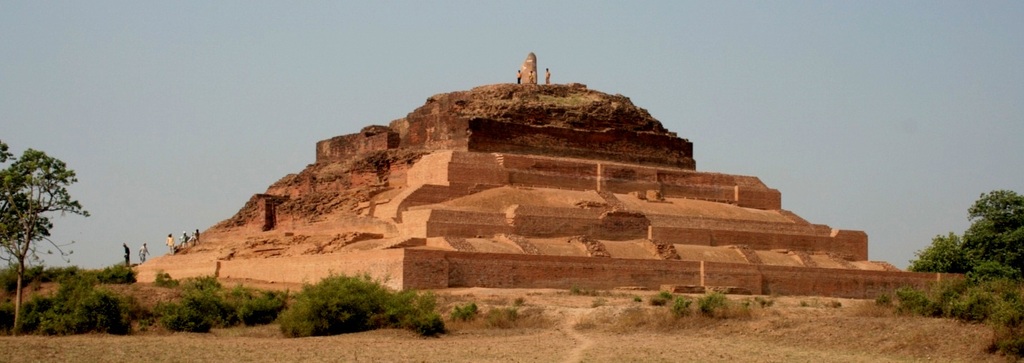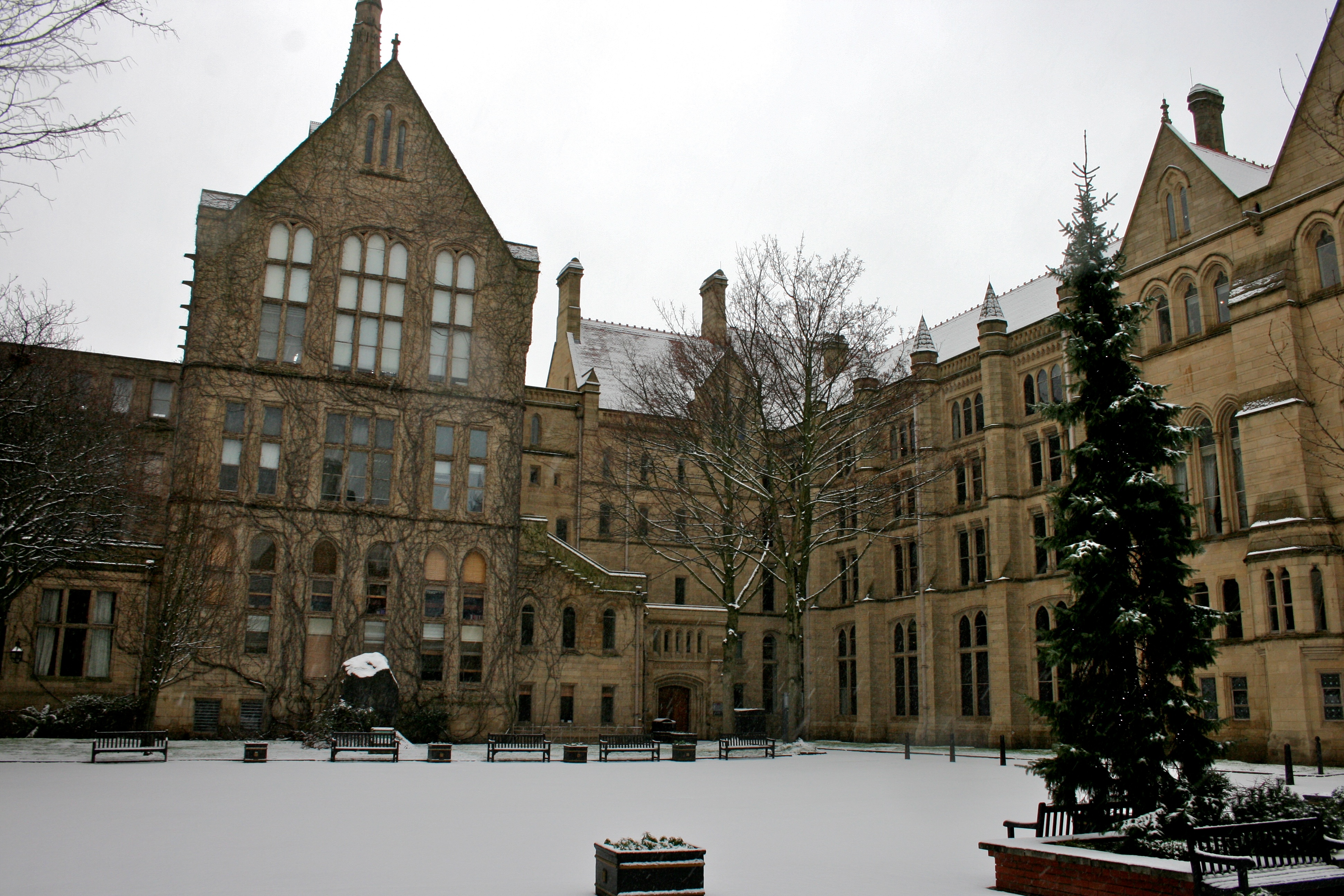|
Girish Agarwal
Girish S. Agarwal, Fellow of the Royal Society UK, (born 7 July 1946) is a theoretical physicist. He is currently at the Texas A & M University with affiliations to the Departments of Biological and Agricultural Engineering, Physics and Astronomy, and the Institute for Quantum Science and Engineering. Earlier he worked as Noble Foundation Chair and the Regents Professor at the Oklahoma State University. He is a recognized leader in the field of quantum optics and also has made major contributions to the fields of nonlinear optics, nanophotonics and plasmonics. In 2013 he published the textbook "Quantum Optics", covering a wide range of recent developments in the field, which has been well received by the community. Life Born in Bareilly, India, Agarwal studied physics at the Gorakhpur University, Gorakhpur, India, (BSc in 1964) and Banaras Hindu University in Varanasi, India, (MSc in 1966). In 1969, he received his PhD from the University of Rochester, USA, followed by post-docto ... [...More Info...] [...Related Items...] OR: [Wikipedia] [Google] [Baidu] |
Bareilly, India
Bareilly () is a city in Bareilly district in the Indian state of Uttar Pradesh. It is among the largest metropolises in Western Uttar Pradesh and is the centre of the Bareilly division as well as the historical region of Rohilkhand. The city lies in the Indo-Gangetic Plains, about north west of the state capital, Lucknow, and east of the national capital, New Delhi. With a population of 898,167 in 2011, it is the eighth most populous city in the state, seventeenth in northern India and fifty-fourth in India. It is located on the bank of Ramganga River and is the site of the Ramganga Barrage built for canal irrigation. The earliest settlement in what is now Bareilly was established in 1537 by Jagat Singh Katehriya who named it 'Bans-Bareli' after his two sons Bansaldev and Bareldev. The town came under the rule of Mughals in 1569 and had become the capital of a local pargana by 1596. The foundation of the modern city of Bareilly was laid by Mughal governor Mukrand Rai in 16 ... [...More Info...] [...Related Items...] OR: [Wikipedia] [Google] [Baidu] |
Jawaharlal Nehru Centre For Advanced Scientific Research
The Jawaharlal Nehru Centre for Advanced Scientific Research (JNCASR) is a multidisciplinary research institute located at Jakkur, Bangalore, India. It was established by the Department of Science and Technology of the Government of India, to mark the birth centenary of Pandit Jawaharlal Nehru, the first prime minister of independent India. It is considered one of the most prestigious research institutes in India. In 2019, JNCASR was ranked #7 among the world's top ten research institutes by ''Nature'' journal in a normalised ranking of small research institutes with high quality output. Academics Researchers at the centre are divided into seven units: Chemistry and Physics of Materials, Engineering Mechanics, Evolutionary and Organismal Biology, Molecular biology and Genetics, New Chemistry, Theoretical Sciences, Education Technology and Geodynamics. There are two off-campus units: Chemical Biology and Condensed Matter Theory. JNCASR has a faculty-to-student ratio of about ... [...More Info...] [...Related Items...] OR: [Wikipedia] [Google] [Baidu] |
University Of Manchester
, mottoeng = Knowledge, Wisdom, Humanity , established = 2004 – University of Manchester Predecessor institutions: 1956 – UMIST (as university college; university 1994) 1904 – Victoria University of Manchester 1880 – Victoria University 1851 – Owens College 1824 – Manchester Mechanics' Institute , endowment = £242.2 million (2021) , budget = £1.10 billion (2020–21) , chancellor = Nazir Afzal (from August 2022) , head_label = President and vice-chancellor , head = Nancy Rothwell , academic_staff = 5,150 (2020) , total_staff = 12,920 (2021) , students = 40,485 (2021) , undergrad = () , postgrad = () , city = Manchester , country = England, United Kingdom , campus = Urban and suburban , colours = Manchester Purple Manchester Yellow , free_label = Scarf , free = , website = , logo = UniOfManchesterLogo.svg , affiliations = Universities Research Association Sutton 30 Russell Group EUA N8 Group NWUA ACUUniversities UK The Universit ... [...More Info...] [...Related Items...] OR: [Wikipedia] [Google] [Baidu] |
Austria
Austria, , bar, Östareich officially the Republic of Austria, is a country in the southern part of Central Europe, lying in the Eastern Alps. It is a federation of nine states, one of which is the capital, Vienna, the most populous city and state. A landlocked country, Austria is bordered by Germany to the northwest, the Czech Republic to the north, Slovakia to the northeast, Hungary to the east, Slovenia and Italy to the south, and Switzerland and Liechtenstein to the west. The country occupies an area of and has a population of 9 million. Austria emerged from the remnants of the Eastern and Hungarian March at the end of the first millennium. Originally a margraviate of Bavaria, it developed into a duchy of the Holy Roman Empire in 1156 and was later made an archduchy in 1453. In the 16th century, Vienna began serving as the empire's administrative capital and Austria thus became the heartland of the Habsburg monarchy. After the dissolution of the H ... [...More Info...] [...Related Items...] OR: [Wikipedia] [Google] [Baidu] |
TU Wien
TU Wien (TUW; german: Technische Universität Wien; still known in English as the Vienna University of Technology from 1975–2014) is one of the major universities in Vienna, Austria. The university finds high international and domestic recognition in teaching as well as in research, and it is a highly esteemed partner of innovation-oriented enterprises. It currently has about 28,100 students (29% women), eight faculties and about 5,000 staff members (3,800 academics). The university's teaching and research is focused on engineering, computer science, and natural sciences. History The institution was founded in 1815 by Emperor Francis I of Austria as the '' k.k. Polytechnische Institut'' (Imperial-Royal Polytechnic Institute). The first rector was Johann Joseph von Prechtl. It was renamed the ''Technische Hochschule'' (College of Technology) in 1872. When it began granting doctoral and higher degrees in 1975, it was renamed the ''Technische Universität Wien'' (Vienna Univers ... [...More Info...] [...Related Items...] OR: [Wikipedia] [Google] [Baidu] |
Essen
Essen (; Latin: ''Assindia'') is the central and, after Dortmund, second-largest city of the Ruhr, the largest urban area in Germany. Its population of makes it the fourth-largest city of North Rhine-Westphalia after Cologne, Düsseldorf and Dortmund, as well as the ninth-largest city of Germany. Essen lies in the larger Rhine-Ruhr Metropolitan Region and is part of the cultural area of Rhineland. Because of its central location in the Ruhr, Essen is often regarded as the Ruhr's "secret capital". Two rivers flow through the city: in the north, the Emscher, the Ruhr area's central river, and in the south, the Ruhr River, which is dammed in Essen to form the Lake Baldeney (''Baldeneysee'') and Lake Kettwig (''Kettwiger See'') reservoirs. The central and northern boroughs of Essen historically belong to the Low German ( Westphalian) language area, and the south of the city to the Low Franconian ( Bergish) area (closely related to Dutch). Essen is seat to several of the region's ... [...More Info...] [...Related Items...] OR: [Wikipedia] [Google] [Baidu] |
Erlangen
Erlangen (; East Franconian German, East Franconian: ''Erlang'', Bavarian language, Bavarian: ''Erlanga'') is a Middle Franconian city in Bavaria, Germany. It is the seat of the administrative district Erlangen-Höchstadt (former administrative district Erlangen), and with 116,062 inhabitants (as of 30 March 2022), it is the smallest of the eight major cities (''Town#Germany, Großstadt'') in Bavaria. The number of inhabitants exceeded the threshold of 100,000 in 1974, making Erlangen a major city according to the statistical definition officially used in Germany. Together with Nuremberg, Fürth, and Schwabach, Erlangen forms one of the three metropolises in Bavaria. With the surrounding area, these cities form the Nuremberg Metropolitan Region, European Metropolitan Region of Nuremberg, one of 11 metropolitan areas in Germany. The cities of Nuremberg, Fürth, and Erlangen also form a triangle on a map, which represents the heartland of the Nuremberg conurbation. An element of th ... [...More Info...] [...Related Items...] OR: [Wikipedia] [Google] [Baidu] |
Max Planck Institute For The Science Of Light
The Max Planck Institute for the Science of Light (MPL) performs basic research in optical metrology, optical communication, new optical materials, plasmonics and nanophotonics and optical applications in biology and medicine. It is part of the Max Planck Society and was founded on January 1, 2009 in Erlangen near Nuremberg. The institute is based on the Max Planck Research Group "Optics, Information and Photonics", which was founded in 2004 at the University of Erlangen-Nuremberg, as a precursor. The institute currently comprises four divisions. Structure The institute currently is organized in four divisions, each led by a director with equal rights. The institute researchers are supported by several scientifically active technology development and service units. It is also the home of several Max Planck Research Groups that are organizationally independent of the divisions. The MPL hosts an ''International Max Planck Research School Physics of Light' Through the appointment ... [...More Info...] [...Related Items...] OR: [Wikipedia] [Google] [Baidu] |
Germany
Germany,, officially the Federal Republic of Germany, is a country in Central Europe. It is the second most populous country in Europe after Russia, and the most populous member state of the European Union. Germany is situated between the Baltic and North seas to the north, and the Alps to the south; it covers an area of , with a population of almost 84 million within its 16 constituent states. Germany borders Denmark to the north, Poland and the Czech Republic to the east, Austria and Switzerland to the south, and France, Luxembourg, Belgium, and the Netherlands to the west. The nation's capital and most populous city is Berlin and its financial centre is Frankfurt; the largest urban area is the Ruhr. Various Germanic tribes have inhabited the northern parts of modern Germany since classical antiquity. A region named Germania was documented before AD 100. In 962, the Kingdom of Germany formed the bulk of the Holy Roman Empire. During the 16th ce ... [...More Info...] [...Related Items...] OR: [Wikipedia] [Google] [Baidu] |
Garching Bei München
Garching bei München (''Garching near Munich'') or Garching is a town in Bavaria, Germany, near Munich. It is the home of several research institutes and university departments on its Campus Garching, campus. It became a city on 14 September 1990. Location The town is at , near the river Isar and the A9 autobahn, Bundesautobahn 9. Garching has a number of scientific research institutes and scientific experiment facilities located in the city, including a linear accelerator and a research nuclear reactor. The nuclear research reactor, nicknamed ''Atomei'' (atomic egg) appears in the city's coat of arms, and started the process leading to an accumulation of research institutes. A number of roads and places in the city are named after scientists, mathematicians and technical innovators such as Carl von Linde, Rudolf Diesel, Albert Einstein, Leonhard Euler, Werner Heisenberg, Max Planck, Wilhelm Röntgen, and Erwin Schrödinger. Districts The town has four districts: * Garching * D ... [...More Info...] [...Related Items...] OR: [Wikipedia] [Google] [Baidu] |
Max Planck Institute Of Quantum Optics
The Max-Planck-Institute of Quantum Optics (abbreviation: MPQ; german: Max-Planck-Institut für Quantenoptik) is a part of the Max Planck Society which operates 87 research facilities in Germany. The institute is located in Garching, Germany, which in turn is located 10 km north-east of Munich. Five research groups work in the fields of attosecond physics, laser physics, quantum information theory, laser spectroscopy, quantum dynamics and quantum many body systems. Structure Divisions * Attosecond physics (Ferenc Krausz) * Laser spectroscopy (Theodor W. Hänsch) * Quantum dynamics (Gerhard Rempe) * Quantum many body systems (Immanuel Bloch) * Theory (Juan Ignacio Cirac Sasturain) Research groups * RyD-QMB, Rydberg Dressed Quantum Many-Body Systems (Christian Groß) * Antimatter spectroscopy (Masaki Hori) * Otto Hahn Group Quantum Networks (Andreas Reiserer) * Theory of Quantum Matter (Richard Schmidt) * Entanglement of Complex Quantum Systems (Norbert Schuch) R ... [...More Info...] [...Related Items...] OR: [Wikipedia] [Google] [Baidu] |
Boulder, Colorado
Boulder is a home rule city that is the county seat and most populous municipality of Boulder County, Colorado, United States. The city population was 108,250 at the 2020 United States census, making it the 12th most populous city in Colorado. Boulder is the principal city of the Boulder, CO Metropolitan Statistical Area and an important part of the Front Range Urban Corridor. Boulder is located at the base of the foothills of the Rocky Mountains, at an elevation of above sea level. Boulder is northwest of the Colorado state capital of Denver. It is home of the main campus of the University of Colorado, the state's largest university. History On November 7, 1861, the Colorado General Assembly passed legislation to locate the University of Colorado in Boulder. On September 20, 1875, the first cornerstone was laid for the first building (Old Main) on the CU campus. The university officially opened on September 5, 1877. In 1907, Boulder adopted an anti- saloon ordinanc ... [...More Info...] [...Related Items...] OR: [Wikipedia] [Google] [Baidu] |





